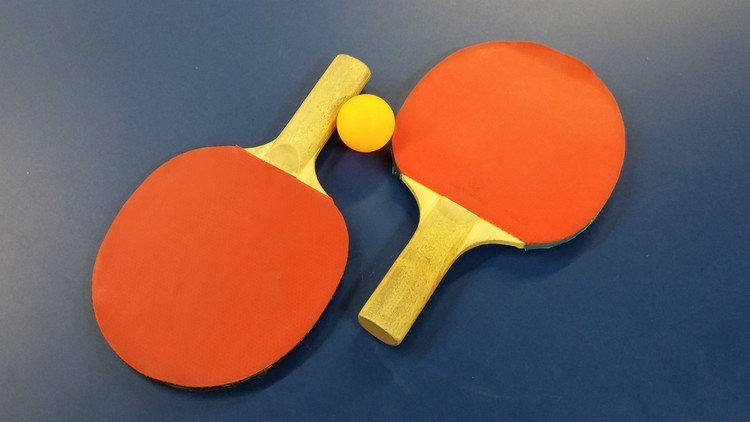Table Tennis Tips - Selecting Equipment to Enhance Or Improve Your Game
As table tennis becomes more popular, the number of businesses producing equipment for your sport is on the rise. This increased prevalence results in an abundance of equipment alternatives for customers to evaluate. Each piece of gear performs an important function and must be chosen with thoughtful consideration. Table tennis regulations set by the International Table Tennis Federation (ITTF) dictate specifications for equipment qualified for official contest. The ITTF maintains a listing of approved manufacturers and versions on their website.
Choosing your paddle is often as simple as picking one off the shelf in your local sporting goods shop, or it may be an involved process that begins with choosing a blank paddle at the dimensions, shape, and burden you find most comfortable and then adding plastic sheets which will influence your style of play. The kind of paddle you select may have a definite impact on your game. Paddle selection may not seem important to someone who is enjoying the sport on a everyday basis, but for anyone who is hoping to advance their level of drama, paddle selection is crucial.
It is encouraged that you try-out several choices before deciding on the kind of paddle which will help you to achieve your very best game. ITTF rules don't specify a required dimensions, shape or weight for a licensed paddle, but they do state that one side of the paddle has to be red and one side has to be black. The kind of rubber sheets inserted to the paddle can be different on every side. This is important because the type of rubber on a paddle can determine whether or not a ball spins when hit or how quickly it moves when returned. Trying different kinds of plastic sheets will enable you to determine which dimensions and texture best matches your style of playing. A pre-made table tennis paddle ranges in price from $15 to $150. Pricing for a customized paddle begins at about $40.
 Once you have picked your paddle, you'll require a ball. There are a number of manufacturers of table tennis balls out there. ITTF approved table tennis balls must weigh 2.7 grams and measure 40mm in diameter. They are orange or white in color and have a matte finish. Approved balls need to have a bounce of 23cm when dropped from a height of 30cm. Consequently, this is the most common size ball currently being used. You will find other sizes on the market such as the 38mm, which was the ITTF approved dimension before being replaced following the 2000 Olympic Games in an effort to slow match play for spectator enjoyment.
Once you have picked your paddle, you'll require a ball. There are a number of manufacturers of table tennis balls out there. ITTF approved table tennis balls must weigh 2.7 grams and measure 40mm in diameter. They are orange or white in color and have a matte finish. Approved balls need to have a bounce of 23cm when dropped from a height of 30cm. Consequently, this is the most common size ball currently being used. You will find other sizes on the market such as the 38mm, which was the ITTF approved dimension before being replaced following the 2000 Olympic Games in an effort to slow match play for spectator enjoyment.
A star rating system can be used to grade the standard of each ball. A one-star score is the lowest score given. These balls are acceptable practice chunks. A ball ranked with two-stars is a step above its own one-star rated counterpart. These balls are suitable for training purposes. The maximum quality ball is provided a three-star rating and is qualified for use in international competition. Three-star balls would be the very evenly assembled and present the most true flight and flight, two fundamental elements for an effective game. Not all balls are rated. You can purchase balls which aren't analyzed to fulfill ITTF criteria of size or weight. Unrated and one-star rated balls are typically the cheapest. They can be purchased for roughly $5 per dozen. Balls which are rated with two and three celebrities begin at about $7 per dozen.
Finally, you'll require a decent table to play table tennis . There's a vast assortment of table designs offered for your own consideration. If you will be moving your table regularly, a table which could be folded easily for storage is a sensible choice. It would also be a good idea to guarantee the table has rollers for easier maneuverability. Stationary tables are offered to get a more permanent placement. A third option is a conversion shirt, which fits over your existing billiard dining table, converting it into a table tennis table.
Tabletops ought to be examined to ensure they are even and smooth. A tabletop that is warped or has tough spots will prevent the ball from bouncing correctly when it strikes the table. This will negatively affect game play. ITTF approved tables must be blue or green in color with a matte finish. White lines are painted around the edges and round the middle, dividing the table into two even halves. A regulation table must quantify 9 ft long x 5 feet wide x 30 inches high. Table tennis tables vary in price from $250 to get a simple starter table to over $2000 for a competition quality table. find out more info click table tennis rackets
